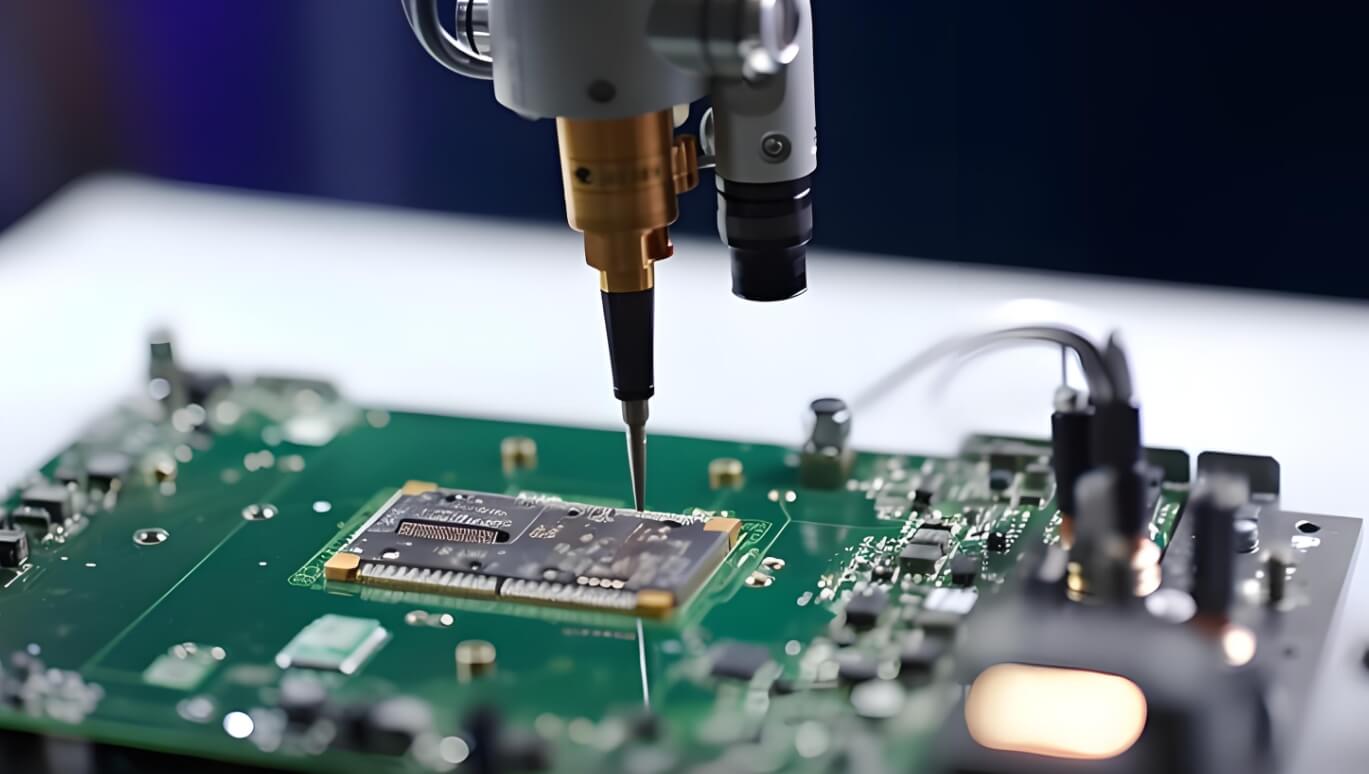After years of development, Laser welding technology has become more mature and widely used across various fields, particularly in the electronics industry. In PCB Manufacturing, laser welding utilizes a laser as a heat source to melt and connect solder materials, ensuring precise and reliable connections between electronic components. This technology enhances the quality of PCB assemblies by providing high precision, minimal thermal impact, and reduced risk of defects.
The main applications of laser welding in the electronics industry include the following aspects:
Printed circuit board welding: Laser welding in PCB production offers high-precision and high-quality welding by controlling heat accurately. It reduces the impact on surrounding components and minimizes issues like uneven solder joints and thermal damage. This method enhances the quality and reliability of PCBs, particularly for multi-layer and high-density designs, supporting the miniaturization and integration trends in electronic equipment.
FPC board welding: Flexible printed circuit boards (FPCs) are lightweight, thin, and offer high wiring density and flexibility, requiring advanced welding technology. Laser welding, with its non-contact heating method, prevents damage to the FPC substrate while ensuring precise and stable welding. It is ideal for connecting FPCs to other components, such as PCB boards or chips on FPCs.
Welding micro-step assembly components: In the fields of camera modules, chip packaging, etc., micro-step assembly components need to be welded. The high-precision focusing capability of laser welding can achieve precise welding even at extremely small spot diameters (such as 0.1mm), which can meet the requirements of these high-precision welding and ensure the performance and reliability of PCB components.
Welding integrated circuits and semiconductors: Laser welding is ideal for integrated circuits and semiconductor devices due to its high energy density, precise temperature control, and non-contact nature. It enables fine welding, such as chip pin welding and semiconductor wafer connections, with minimal thermal damage. The small heat-affected zone enhances reliability and improves the quality and performance of the devices.
Welding of electronic components: Laser welding enables fast and precise welding of various electronic components like resistors, capacitors, inductors, and connectors. It is particularly advantageous for miniaturized, uniquely shaped components, or those requiring high welding quality. This technology is commonly used in devices like smartphones and tablets to weld internal electronic components.
Welding of photovoltaic energy storage inverters: Laser welding technology enhances the manufacturing and repair of photovoltaic energy storage inverters by improving welding accuracy and consistency. This ensures high-quality solder joints, which in turn boosts the reliability and efficiency of inverters, supporting the development of photovoltaic energy storage systems.
Sensor manufacturing: Sensors require delicate welding operations during production to ensure performance and reliability. Laser welding technology can achieve precise welding of small sensor solder joints without damaging sensitive sensor components. For example, laser welding is widely used in the manufacturing process of temperature sensors, pressure sensors, optical sensors, etc.

Laser Soldering
Laser soldering technology offers several key advantages:
1. Fine Connections and Sealing: It ensures high-precision connections for tiny components and improved sealing, which is crucial for applications like sensor components and electric vehicle battery assemblies.
2. Small Spot and Concentrated Energy: Laser welding focuses energy on a small spot (micron level), making it ideal for high-density and miniaturized electronic components, ensuring precision in solder joints.
3. Precise Position Control: Accurate positioning of the laser allows for welding complex structures and narrow spaces without damaging surrounding components, such as in Multi-layer PCB or FPC board welding.
4. Minimal Damage to Components: Local heating minimizes the thermal impact on surrounding components, reducing the risk of damage or performance degradation, particularly for temperature-sensitive parts.
5. Reduced Thermal Stress: The small heat-affected zone minimizes thermal stress, which improves the reliability of the solder joint and reduces the risk of fatigue or cracking.
6. High Reliability of Solder Joints: Stable energy and precise control result in strong, high-quality solder joints with excellent reliability, extending the lifespan of electronic equipment.
7. Avoids Welding Defects: Laser soldering reduces the likelihood of common defects like cold or false welding, ensuring consistent and stable quality.
8. No Mechanical Stress: The non-contact nature of laser welding prevents mechanical pressure on the components, avoiding deformation or damage, ideal for precision electronics.
9. Prevents Static Electricity: The non-contact welding process reduces static electricity risks, which is crucial for sensitive electronic components.
10. Rapid Heating and Cooling: The laser's concentrated energy allows for quick melting and cooling, reducing welding time and boosting production efficiency.
11. High Automation: Laser soldering systems can be integrated into automated production lines, improving consistency, reducing manual labor, and increasing production speed.
In conclusion, Laser soldering technology offers significant advantages for PCB Manufacturing, particularly in terms of precision, efficiency, and reliability. Its ability to provide fine, high-quality solder joints with minimal thermal impact makes it an ideal solution for high-density, miniaturized, and complex PCB designs. The precision control of laser welding ensures the integrity of sensitive components while minimizing defects and thermal stress. With its rapid heating and cooling, reduced mechanical stress, and enhanced automation, laser soldering improves production efficiency and product consistency. As the demand for smaller, more intricate electronic devices grows, laser soldering will continue to play a crucial role in advancing PCB manufacturing processes, delivering superior results with increased precision and reliability.